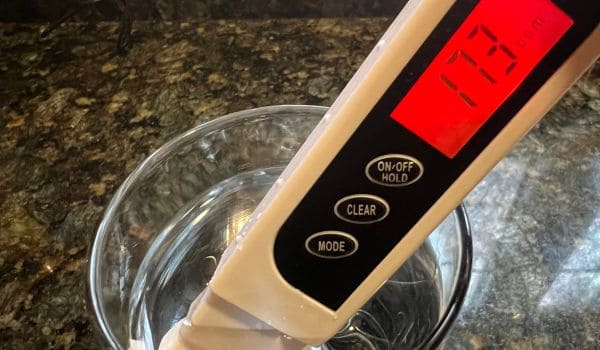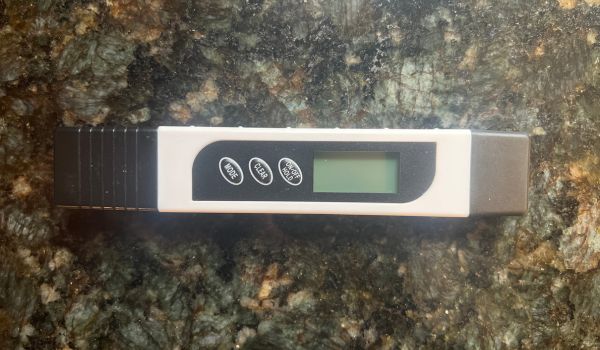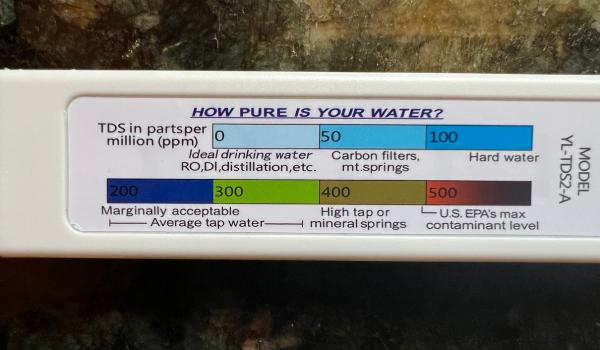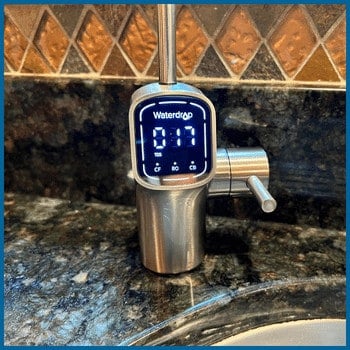Are you noticing a decline in your water quality despite using a Reverse Osmosis (RO) system? You might be facing the sneaky challenge of TDS Creep. This common yet often overlooked issue can compromise your RO system’s efficiency and your water’s purity.
But don’t worry, understanding and tackling TDS Creep is simpler than you think.
Key Takeaways:
- Flush First: Start by running your tap for a minute before using the water. If your system has a tank, empty and refill it to clear out TDS buildup.
- Regular Filter Checks: Make it a habit to check and change your RO system’s filters regularly. This can prevent TDS Creep from starting in the first place.
- Upgrade if Needed: If you’re frequently dealing with TDS Creep, consider upgrading to a more advanced RO system for better control and efficiency.
Understanding TDS

TDS, or (Total Dissolved Solids), might sound like jargon, but it’s actually a crucial part of the water quality puzzle. Imagine TDS as the silent characters in your water’s story – minerals, salts, and even metals.
They’re invisible to the eye, but their presence, or absence, tells you a lot about what you’re drinking. Checking TDS isn’t rocket science; a handy little meter can reveal the secrets of your water, helping you ensure it’s as healthy as it should be.
Expert Insights on TDS:
- TDS and Taste: Higher TDS levels can influence the taste of water, often giving it a more mineral-rich flavor.
- Health Connection: While TDS itself isn’t a direct health hazard, extremely high or low levels can indicate the presence of harmful substances or a lack of beneficial minerals.
- Variability: TDS levels can vary greatly depending on the source of the water, with groundwater typically having higher TDS compared to surface water.
- RO Impact: RO systems are designed to significantly reduce TDS, but effectiveness can vary based on system maintenance and water quality.
What Causes TDS Creep?

TDS Creep in RO systems? It’s kind of like a slow-moving shadow, sneaking up on you and messing with your water quality before you even realize it’s a problem. And it’s not just about your system getting older – there are a bunch of reasons why this happens.
What’s Really Behind TDS Creep?
- Not Using Your System Enough: It’s like a muscle; if you don’t use your RO system regularly, TDS levels start creeping up.
- The Membrane’s Getting Old: The main part of your RO system, the membrane, can wear out or get clogged over time, letting more stuff slip through.
- Changes in Your Water: If the water coming into your system is getting dirtier, your system has to work harder, and sometimes TDS can sneak through.
- How It’s Set Up: Believe it or not, the way your system is designed and installed can make it more prone to TDS Creep.
Understanding what’s behind TDS Creep is super important. Once you’ve got a handle on the reasons, it’s like having a roadmap to keep it under control. It’s all about being one step ahead so that your water stays just the way it should be – clean and pure.
Implications of TDS Creep in Under-Sink RO Systems

When TDS Creep sneaks into your under-sink RO system, it’s more than just a number going up. But when your water pressure drops, it’s a sign that something’s wrong which can affect your system and water quality.
- Taste and Quality: Higher TDS can mean a noticeable change in your water’s taste. This isn’t just about being picky; it’s about enjoying the water you drink every day.
- System Strain: As TDS levels rise, it can mean your RO system is struggling to keep up. This can lead to wear and tear, potentially reducing the system’s lifespan.
- Maintenance Needs: Increased TDS might be a wake-up call for more frequent maintenance or even system upgrades, to ensure your water stays as pure as you expect.
- Health Implications: While TDS in itself isn’t a health hazard, significant changes in TDS levels can indicate other issues with water quality that might need looking into.
Simply put, keeping tabs on TDS Creep makes sure your under-sink RO system works like a charm, consistently giving you top-notch water quality.
Detecting and Measuring

Knowing how to spot TDS Creep in your under-sink RO system is key to nipping the problem in the bud. Luckily, it’s not as daunting as it sounds. Here’s how you can stay on top of it:
- Regular TDS Monitoring: A simple TDS meter can be your best friend. Regular checks can help you track any changes in TDS levels over time.
- Watch for Taste Changes: Your taste buds can be surprisingly good indicators. If the water starts tasting different, it might be time to check the TDS.
- System Performance Clues: Notice your system taking longer to fill the tank or making unusual sounds? These could be subtle hints that TDS Creep is setting in.
These steps are pretty straightforward and can make a big difference in maintaining your system efficiently – it’s as simple as that, no PhD required : )
The TDS Meter we used cost less than 15 bucks and works just as good as the expensive ones – so don’t waste your money. See it here.
Solutions and Prevention

Battling TDS Creep in your RO system isn’t just about fixing problems as they arise; it’s about being proactive and smart with your system’s care. Here’s a fresh take on keeping TDS Creep in check, focusing on both immediate solutions and long-term strategies.
Getting Ahead of TDS Creep:
- Stay on Top of Filter Changes: It’s easy to forget, but changing your filters as recommended is crucial. This simple step can do wonders in preventing TDS Creep.
- Keep It Running: Regular use of your RO system isn’t just good; it’s essential. It helps maintain the system’s balance and prevents TDS levels from creeping up.
- Be a Water Quality Detective: Invest in a good TDS meter and use it. Regular monitoring lets you catch any unusual changes early on. Most newer models like the one I have, has a TDS meter built-in.
- Expert Eyes: Even if you’re a DIY enthusiast, having a professional give your system a check-up can provide insights you might miss.
Adopting these approaches will not only tackle TDS Creep but also extend the life and efficiency of your RO system, ensuring consistently high-quality water.
How to Fix

Facing TDS Creep in your RO system can be frustrating, but there are actionable steps you can take right now to address it. These practical water quality control tips aim to quickly improve your situation so you can get back in the driver’s seat and steer your H2O health in the right direction.
Immediate Actions to Reduce TDS Creep:
- Flush the System: Start by flushing your RO system. This can help clear out any stagnant water and reset the system’s filtration process.
- Check and Clean Filters: Inspect your filters. If they’re due for a change, replace them. If not, give them a good cleaning to ensure they’re functioning optimally.
- Inspect the RO Membrane: The membrane is the heart of your system. If it’s damaged or excessively dirty, it might be time for a replacement.
- Adjust the Flow Restrictor: If your system has a flow restrictor, adjusting it can help manage the water flow and improve the filtration process, reducing TDS levels.
- Test and Rebalance the Water: After taking these steps, use your TDS meter to test the water again. If the TDS levels are still high, it might indicate a need for system recalibration or professional servicing.
With these tricks up your sleeve, you can seriously drop the TDS count in your water, making it taste better and upping its quality.
Time to Update Your System

Sometimes, despite all your efforts, TDS Creep can signal that it’s time for an upgrade. Modern RO systems, like the WaterDrop G3P800, come with advanced features that not only tackle TDS Creep effectively but also offer ease of use and enhanced water quality.
We love ours and haven’t had any issues in over a year since we’ve owned it. You can read our full review here.
Why Consider Upgrading to WaterDrop’s G3P800:
- Built-in TDS Meter: This system includes a TDS meter that constantly monitors water quality, giving you real-time insights and peace of mind.
- Advanced Filtration Technology: With its state-of-the-art filtration capabilities, the G3P800 ensures a significant reduction in TDS and other contaminants.
- User-Friendly Design: It’s designed for convenience, making maintenance and filter changes straightforward and hassle-free.
- Long-Term Efficiency: Investing in a system like this can mean fewer worries about TDS Creep and more time enjoying pure, high-quality water.
If you’re constantly battling TDS issues, considering an upgrade to a system like the WaterDrop G3P800 could be a smart move. We think you’ll love it!
 103 people found this helpful. Was this guide helpful to you?
103 people found this helpful. Was this guide helpful to you? 

